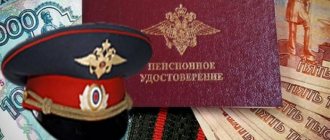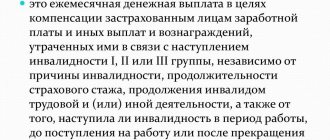When did it appear?
Pensions in the USSR originated in 1956, namely on July 14 after the signing of the relevant law.
The adopted bill contained such important points as:
- general requirements of the pension system;
- age criteria and period of work experience;
- procedure for payment of pensions;
- unified calculation procedure;
- the amount of pension contributions for different categories of citizens.
10 years after the above bill, a new pension system was developed, as a result of which all pension payments were made at the expense of the state.
The advantage of the Soviet pension system is that all citizens of the country received a minimum level of pension.
Characteristics of the USSR pension reform
Let us highlight the main features of the USSR pension reform:
- The retirement age does not differ from the current indicators - 55 and 60 years (women and men, respectively).
- The pension was assigned in the following categories:
- by old age;
- disability;
- for loss of a breadwinner;
- for long service.
- Pension payments to disabled people from war or childhood were paid from the Union budget, and to military personnel from the budget of the Ministry of Defense. As a result, the main problem of the pension structure is unbalanced expenses and revenues of budget funds.
- All citizens of retirement age received pension payments not lower than the subsistence level.
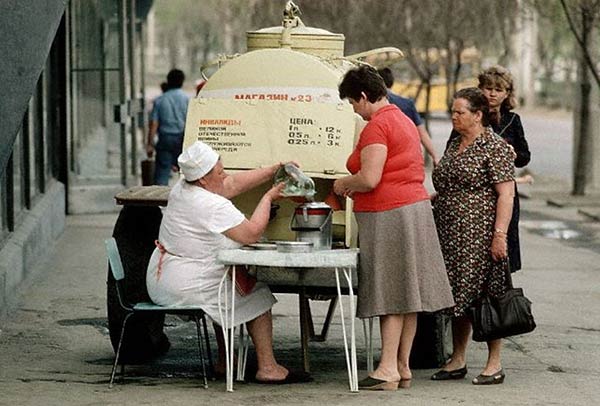
- Since 1964 , a system of pension payments for collective farmers has been developed, according to which pensions were assigned from the union budget.
- Since 1967 , the amount of pension contributions was increased, but already in the 80s the pension was gradually decreasing, since there was no functioning mechanism for annual indexation.
- In the 90s it was necessary to change the reform for a number of reasons:
- active aging of the country's population;
- reduction in the working population;
- dissemination of the early retirement system;
- low income;
- falling oil prices;
- reduction in production volume;
- budget deficit.
- Since 1987 , changes were made according to which every citizen could voluntarily replenish their pension savings.
- In 1990, the Pension Fund (PFR) was created.
Work experience
Pension contributions in the USSR were assigned after 20 years of service (among the female population) and 25 years (among the male population).
However, some older people could apply for a pension 5 years earlier , namely:
- miners;
- hot shop employees;
- textile industry workers;
- citizens who have worked in the Far North for 15 (women) and 20 years (men);
- women with 5 children who are already 8 years old - at least 20 years of experience;
- women raising disabled children - 20 years of experience.
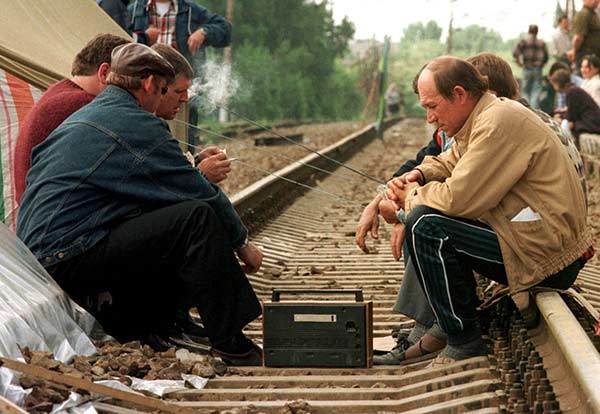
The pension was granted subject to the following conditions:
- reaching the appropriate age;
- total experience of 5 years;
- length of service before making pension contributions - 3 years or more.
Average pension figures
The total volume of pension payments in the USSR depended on the salary and the number of years worked.
Pension payments for rural residents were 15% lower than the size of pension payments for city employees!
Thus, average pension contributions in the city ranged from 70-120 rubles per month.
But there were also higher figures, for example, the head of a large organization could receive 250 rubles a month after receiving a pension.
Citizens who did not officially work received social payments in the amount of 35 rubles.
In addition to the basic amount of pension payments, citizens could count on supplements from the state if the following conditions are met:
- Continuous experience of 15 years - 10% towards pension;
- Long-term experience of more than 30 and 35 years (women and men) - 10%;
- More than 25 years of experience at one enterprise - 20%.
How much was the minimum pension?
The minimum pension in the USSR was 35 rubles.
A pension in this amount was paid to the following categories of elderly people:
- non-working persons;
- not having more than 20 years of experience;
- collective farmers - the majority of residents of rural settlements continued to work when they reached retirement age in order to receive an additional payment to their pension of 10 rubles for each year of work. The amount of allowances could be no more than 40 rubles.
In 1986, the minimum size was raised to 76 rubles!
In fact, a quarter of the elderly people in the USSR received minimum pension contributions.
Community “back in the ussr”
The average pension salary in these years was 67 rubles.
- PENSION SIZE IN 1985
- In 1985, thanks to inflation and rising living standards, pensions in the USSR reached their peak, its average value was 72 rubles. At the same time, collective farmers received a significantly smaller amount than city residents. Their pension averaged 47 rubles.
- AVERAGE PENSION
- Over the entire period of the existence of the USSR, the size of the average pension provision has undergone significant changes. The reason for this was not only inflation, but also a significant increase in the standard of living among Soviet residents.
- And, if in the early 1970s the average pension was only 34 rubles, then by 1986, this amount increased to 76 rubles. In general, the pension salary of those years is quite consistent with the amount of money received by modern pensioners.
Maximum pension benefit criteria
The maximum pension payments were 120 rubles .
Residents of the city who were engaged in mental work, for example, doctors, teachers, engineers , etc., could count on this amount.
In this case, the amount of the pension depended on the amount of the monthly salary. For example, with a salary of up to 50 rubles, a citizen of retirement age could count on pension contributions in the amount of 85% of the salary, that is, only 40 rubles.
Retirement age on the eve of change
Life expectancy also increased. Thus, the statistical collection “Country of Soviets for 50 Years” provides data that the average life expectancy in the USSR in 1965-1966 was 70 years. Moreover, people who reached the age of 60 lived an average of 14 more years. These rates were comparable to life expectancy in countries such as Sweden, Norway and the Netherlands. There at that time people lived to be 73 years old. However, in general, Soviet statistics on average life expectancy in the 1970s and 1980s ranged from about 68 to about 70 years. It should be taken into account that this was a prosperous period from the point of view of the state of medicine and “well-fed” in terms of food supply.
This is interesting: A Chernobyl survivor moved to the Volgograd Region. What benefits can he take advantage of?
Based on the calculated indicators, it was planned to provide an individual increase to the labor pension in the amount of 5 to 40 rubles. However, such an increase on average gave only about 12 rubles. And only a small percentage of the total number of pensioners could count on it.
Pension of people's deputies
In 1989, people's deputies were appointed as the highest authority and held congresses to discuss government issues. The last congress took place on September 5, 1991. It was on this day that the decision was made to dissolve the deputies.
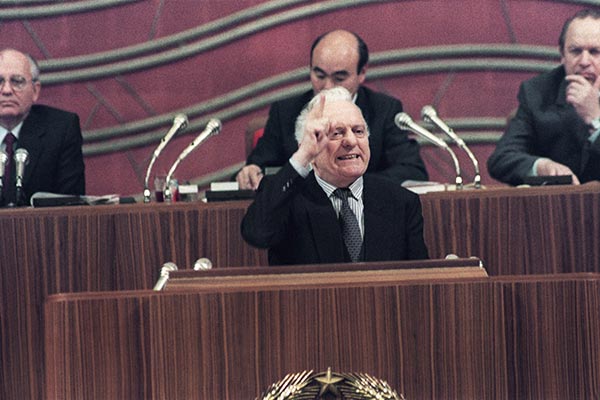
At the moment, the majority of people's deputies have retired due to old age and in the State Duma they raised the issue of increasing pension payments for this category of citizens. Today the number of “former” people’s deputies is only 285 people.
The Ministry of Labor and Social Protection proposes to set the pension amount at 200,000 rubles. The main reason for the draft law was the elimination of the provision on personal pensions for this category of citizens, according to which people’s deputies and their families could receive a decent pension.
They wanted to add to the number of people's deputies a category of citizens who performed similar functions in the union parliament. But the new bill has not entered into legal force!
The main conditions for increasing the pension will be as follows:
- age 65 years;
- presence of Russian citizenship;
- parliamentary activity before 1994 for at least 1 year.
At the moment, the draft law has not been approved by the State Duma. The main reason for refusal is the high amount of budget expenses.
Dmpokrov
Based on the wording of Federal Law 173 (Article 30, clause 3), this is exactly the case - the total salary for this period must be divided by 24 months. The salary in this case is 1494.5. The logic is obvious - your pension capital is determined by the total amount of insurance contributions that you transferred to the Pension Fund (the employer transferred for you). 0 # December 5, 2020 at 00:56 0 Thank you for your answer. I’m not going to retire soon, so I asked the question because I didn’t know how to convert my earnings for these four months before 2002 into pension points. There were no problems with periods after 2002 - a very convenient and understandable site. PS. Due to the fact that the total salary for this period must be divided by 24 months, the number of points turned out to be very small (0.334):) In the first case, it would have been 1.038 points.
Pension payments to collective farmers
Currently, there is a misconception that in Soviet times, collective farmers did not receive pension contributions.
In reality, pensions were paid to all categories of citizens of the country, but from different financial sources. Thus, collective farmers received pensions from artels, which created their own fund for making pension payments.
Recommended reading: How many pensioners are there in Russia?
The created fund was supposed to pay for the pension in the form of cash payments, food products, or additional workdays were accrued. The amount of pension payments was established separately for each collective farmer at a general meeting of artel members or at a meeting of authorized persons.
Let's highlight the main features:
- age 60 and 65 years (women and men, respectively);
- experience - from 20 years;
- minimum pension indicators - 12 rubles;
- maximum criteria – 102 rubles;
- the pension amount was calculated from half the salary for the last 2 years of work or for any 5 years of work activity;
- citizens of retirement age could continue working if they wished;
- The following were entitled to additional benefits and increases: pregnant women;
- ladies caring for a child under 3 years old;
- persons with dependents in their care;
- disabled people.
Disabled war veterans could receive additional payments from the state budget!
In 1964, when the bill on granting pensions to collective farm members came into force, payments began to be made from the state budget. However, collective farms, at their discretion, could retain pension payments from their own budget.
Pension in the USSR: features, calculation rules, differences from the current system
In 1973, pensions were raised to 20 rubles, and in 1987 - to 50. Collective farms could well provide their pensioners with additional payments, that is, collective farmers had to worry about creating funds designed to support the elderly every month - in the form of money, food or workdays. The retirement age and required work experience were set by the collective farm participants.
This is interesting: Benefits for Chernobyl liquidators in Kazakhstan
Participants in collective farms began to receive help only after 10 years, and their pensions were tiny: from 12 to 20 rubles. An important part of the pension for collective farmers was the money collected from the people themselves. In rare cases, funds from the budget could be allocated. Note that until the age of 71, the right to a pension was granted to men over 65 years of age.









